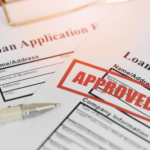If you’re a small business owner looking to grow or secure financing, an SBA (Small Business Administration) loan can be a valuable tool. These loans are specifically designed to support and empower small businesses, providing them with access to capital and resources that might otherwise be challenging to obtain. In this comprehensive guide, we’ll walk you through the step-by-step process of getting an SBA loan.
Step 1: Determine Your Eligibility
Before diving into the application process, it’s crucial to assess your eligibility. The SBA has specific criteria that businesses must meet to qualify for their loans. Typically, you should:
- Be a for-profit business.
- Operate in the United States.
- Have exhausted other financial options.
- Meet size standards based on industry and revenue.
Step 2: Choose the Right SBA Loan Program
The SBA offers various loan programs, each tailored to specific business needs. The two most common ones are the SBA 7(a) loan and the SBA 504 loan. Consider your business goals and needs to determine which program aligns best with your objectives.
SBA 7(a) Loan: Ideal for general working capital, expansion, or equipment purchases. Loan amounts range from $250,000 to $5 million.
SBA 504 Loan: Suited for real estate or equipment purchases. Typically used for larger projects exceeding $5 million.
Step 3: Prepare Necessary Documents
Gather the required documents for your loan application. These may include:
- Business plan.
- Personal and business financial statements.
- Income tax returns.
- Business legal documents.
- Resume of business owners.
Step 4: Find an SBA-Approved Lender
The SBA does not directly lend to businesses but works with a network of approved lenders. Research and connect with a lender experienced in SBA loans. They will guide you through the application process and help you assemble the required documents.
Step 5: Complete the Loan Application
Your chosen lender will provide you with the SBA loans application forms. Fill out the application diligently, providing accurate and detailed information about your business and its financials.
Step 6: Wait for Approval
Once you’ve submitted your application, the lender will review it and send it to the SBA for final approval. The SBA will assess your creditworthiness, business viability, and the purpose of the loan. This process can take several weeks.
Step 7: Receive Funding
Upon approval, you’ll receive the funds needed for your business. Be prepared to adhere to any specific terms and conditions set by the SBA and your lender.
Step 8: Use the Loan Wisely
Ensure you use the funds for the intended purpose, whether it’s expansion, working capital, or purchasing equipment. Responsible use of the loan is crucial for your business’s success and to maintain a good relationship with the SBA and your lender.
Step 9: Repay the Loan
Loans come with repayment terms and interest rates. Make timely payments to meet your financial obligations and avoid any penalties.
Remember that the application process can be complex, and each case is unique. Seek guidance from experienced professionals, like your chosen lender or a financial advisor, to navigate the process smoothly. With the right approach, a loan can be a valuable resource for taking your small business to the next level.




